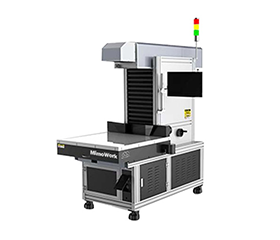Leather Laser Cutting & Perforation
What is laser cutting holes on leather?

Laser perforating technology has emerged as a game-changer for leather manufacturers, revolutionizing their production processes and elevating efficiency to new heights. Gone are the days of slow speed, low efficiency, and the laborious typesetting process associated with traditional manual and electric shear methods. With laser perforating, leather manufacturers now enjoy a simplified typesetting process that not only saves time but also unlocks a world of design possibilities.
The intricate patterns and precise perforations achieved through laser technology have enriched the aesthetics of leather products, enhancing their appeal and setting them apart. Furthermore, this advanced technique has significantly reduced material waste, making it an environmentally friendly choice. The leather industry has witnessed tremendous benefits and embraced the transformative power of laser perforating technology, propelling them into a future of innovation and success.
Why choose laser cutting leather?
✔ Automatic sealed edge of materials with heat treatment
✔ Minimize the waste of material greatly
✔ No contact point = No tool wear = constant high cutting quality
✔ Arbitrary and flexible design for any shape, pattern and size
✔ Fine laser beam means intricate and subtle details
✔ Precisely cut the top layer of a multi-layered leather to achieve a similar effect of engraving
Traditional Leather Cutting Methods
Traditional methods of cutting leather include using a punching press machine and knife scissors. Blanking according to different specifications of parts needs to make and use different shapes of the die.
1. Mold Production
The mold production cost is high and it will take a long time of period to make each single cutting die that is difficult to store. Every single die can only process one kind of design, which lacks some flexibility when it comes to production.
2. CNC Router
At the same time, if you are using CNC Router to knife cut the leather piece, you need to leave a certain space between two cutting pieces which is such a waste of leather material compared to leather processing. The edge of the leather cut by the CNC knife machine is often burred.
Leather Laser Cutter & Engraver
Video Display - How to laser cut leather shoes
what you can learn from this video:
Using the galvo laser engraver to laser cut leather holes is a really productive method. Laser cutting holes and laser marking leather footwear can be continuously finished on the same working table. After cutting the leather sheets, what you need to do is put them in the paper template, the next laser perforation and laser engraving leather upper will be automatically done. High-speed perforating of 150 holes per minute greatly enhances the production efficiency and the moving flatbed galvo head enables customized and mass leather production in a shorter time.
Video Display - Laser Engraving Leather Cratft
Enhance your leather footwear craft with precision using a CO2 laser engraver! This streamlined process ensures detailed and intricate engraving on leather surfaces, allowing for personalized designs, logos, or patterns. Begin by selecting the appropriate leather type and setting optimal parameters for the CO2 laser machine to achieve high-quality results.
Whether adding branding elements to shoe uppers or creating intricate designs on leather accessories, the CO2 laser engraver provides versatility and efficiency in leathercraft.
How to laser cut leather patterns
Step 1. Cut into pieces
Laser perforating technology has emerged as a game-changer for leather manufacturers, revolutionizing their production processes and elevating efficiency to new heights. Gone are the days of slow speed, low efficiency, and the laborious typesetting process associated with traditional manual and electric shear methods.
Step 2. Design the pattern
Look for or design patterns with CAD software like CorelDraw by yourself and upload them into MimoWork Laser Engraving Software. If there is no change in pattern depth, we can set uniform laser engraving power and speed on parameters. If we want to make the pattern more readable or layered, we can design different power or engraving times in the laser software.
Step 3. Place the material
Laser perforating technology has emerged as a game-changer for leather manufacturers, revolutionizing their production processes and elevating efficiency to new heights. Gone are the days of slow speed, low efficiency, and the laborious typesetting process associated with traditional manual and electric shear methods. With laser perforating, leather manufacturers now enjoy a simplified typesetting process that not only saves time but also unlocks a world of design possibilities.
Step 4. Adjust laser intensity
According to the different thicknesses of the leather, different patterns, and different requirements of customers, the engraving intensity is adjusted to the appropriate data, and the laser engraving machine is instructed to engrave the pattern directly to the leather. The higher the power, the deeper the carving depth. Setting the laser power too high will overburn the surface of the leather and cause obvious char marks; setting the laser power too low power will only deliver shallow carving depth that doesn’t reflect the design effect.
Material information of leather laser cutting

Leather refers to the denatured and non-perishable animal skin obtained by physical and chemical processes such as hair removal and tanning. It covers bags, shoes, clothing, and other main industries




